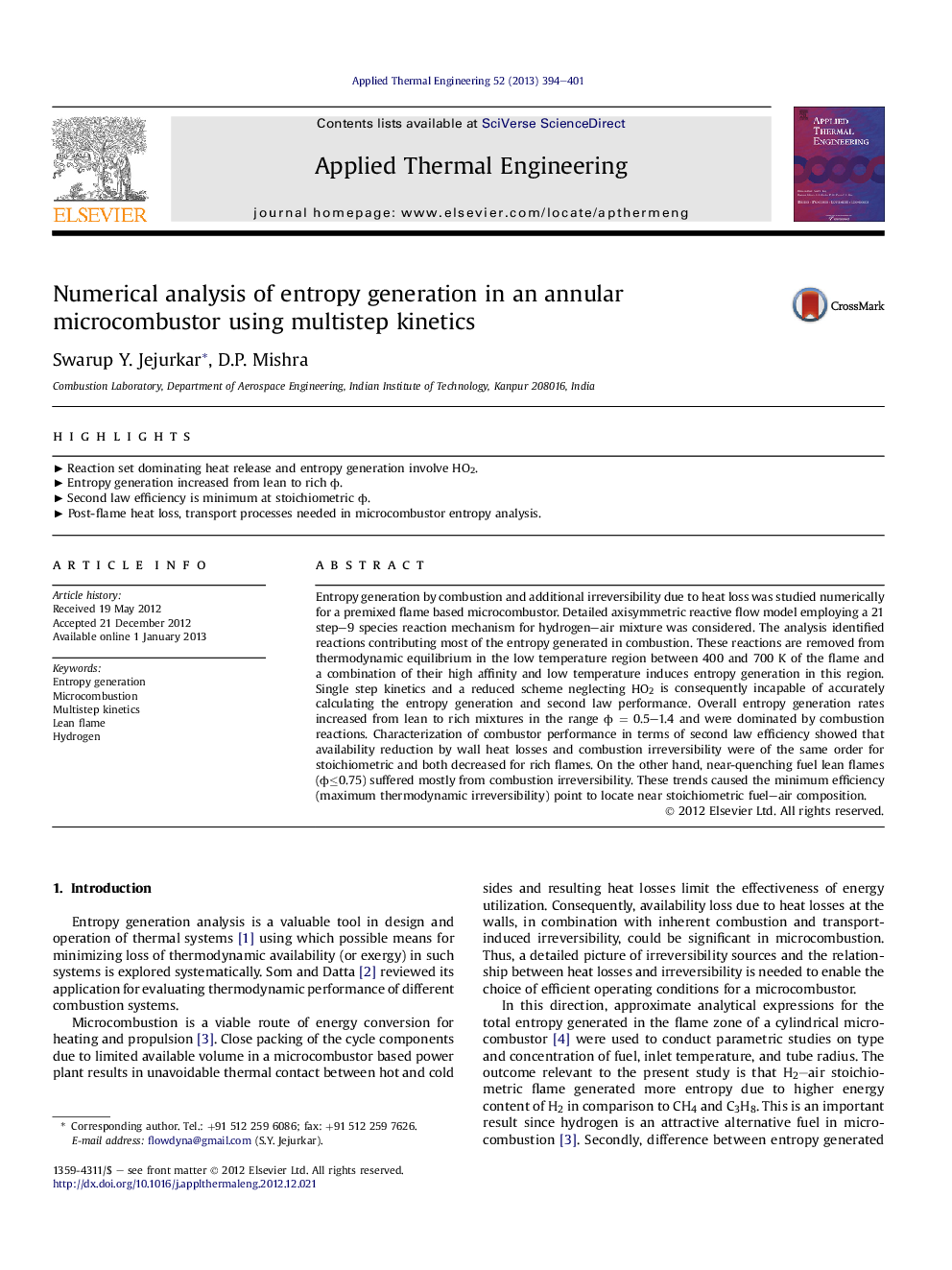| Article ID | Journal | Published Year | Pages | File Type |
|---|---|---|---|---|
| 646990 | Applied Thermal Engineering | 2013 | 8 Pages |
Entropy generation by combustion and additional irreversibility due to heat loss was studied numerically for a premixed flame based microcombustor. Detailed axisymmetric reactive flow model employing a 21 step–9 species reaction mechanism for hydrogen–air mixture was considered. The analysis identified reactions contributing most of the entropy generated in combustion. These reactions are removed from thermodynamic equilibrium in the low temperature region between 400 and 700 K of the flame and a combination of their high affinity and low temperature induces entropy generation in this region. Single step kinetics and a reduced scheme neglecting HO2 is consequently incapable of accurately calculating the entropy generation and second law performance. Overall entropy generation rates increased from lean to rich mixtures in the range ф = 0.5–1.4 and were dominated by combustion reactions. Characterization of combustor performance in terms of second law efficiency showed that availability reduction by wall heat losses and combustion irreversibility were of the same order for stoichiometric and both decreased for rich flames. On the other hand, near-quenching fuel lean flames (ф≤0.75) suffered mostly from combustion irreversibility. These trends caused the minimum efficiency (maximum thermodynamic irreversibility) point to locate near stoichiometric fuel–air composition.
► Reaction set dominating heat release and entropy generation involve HO2. ► Entropy generation increased from lean to rich ф. ► Second law efficiency is minimum at stoichiometric ф. ► Post-flame heat loss, transport processes needed in microcombustor entropy analysis.
